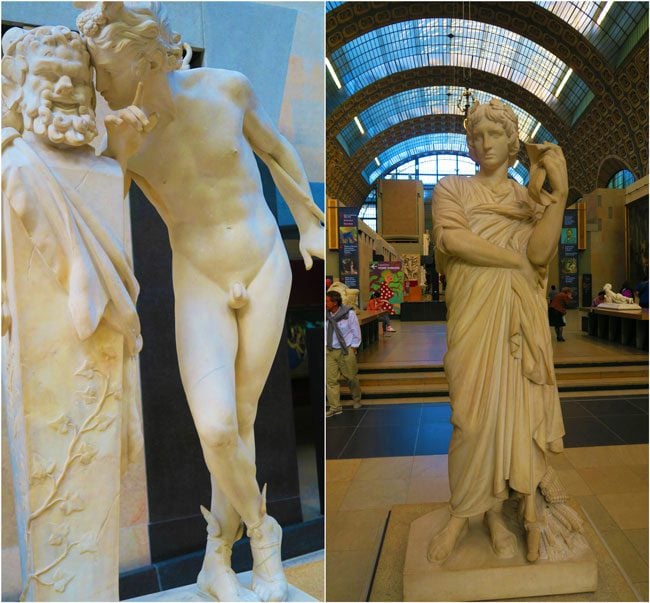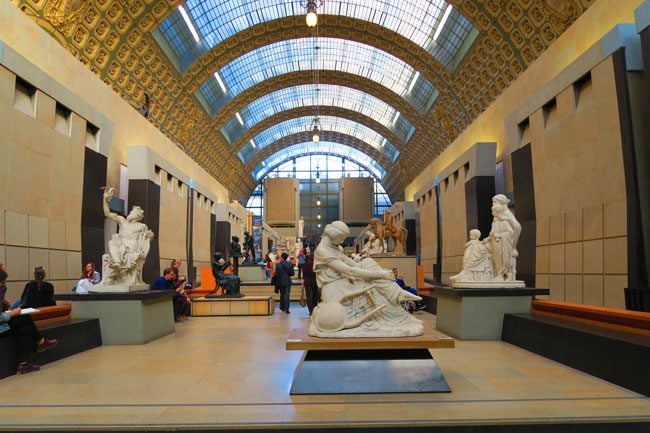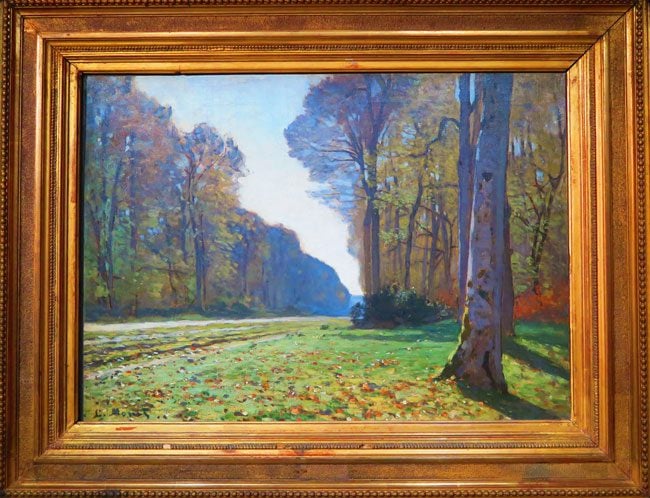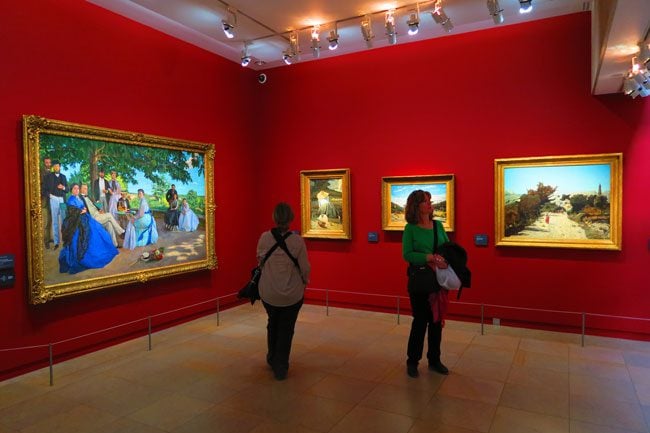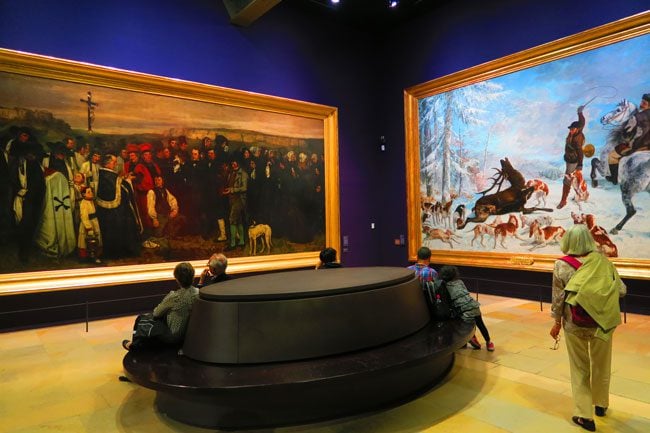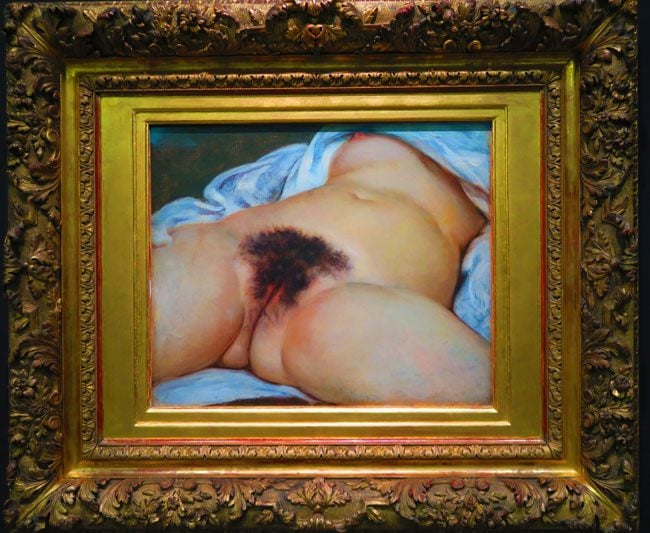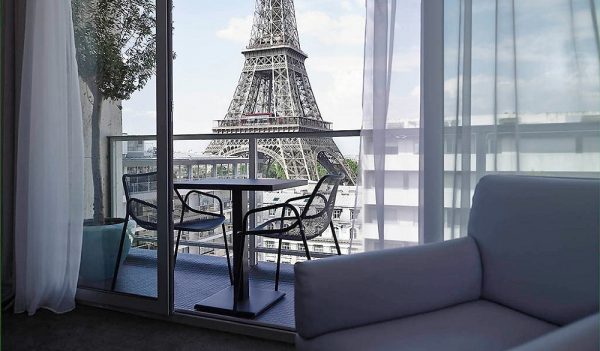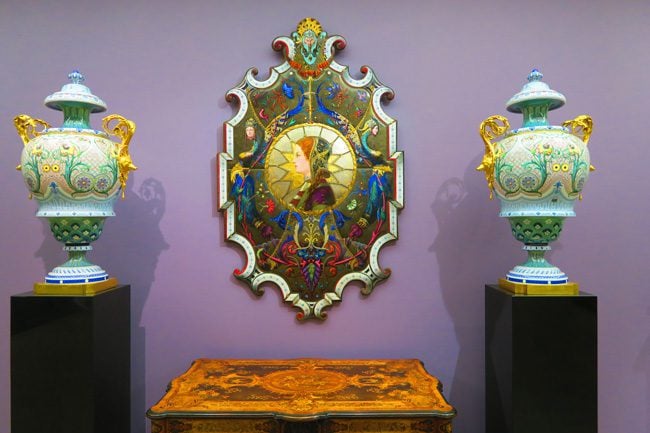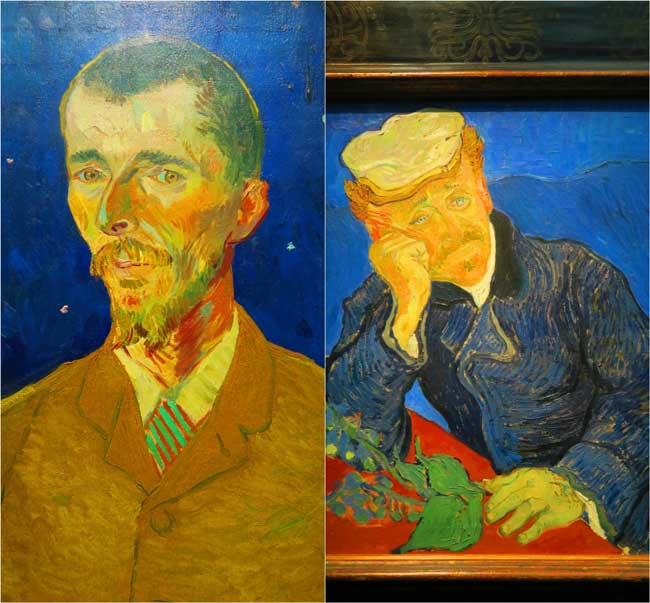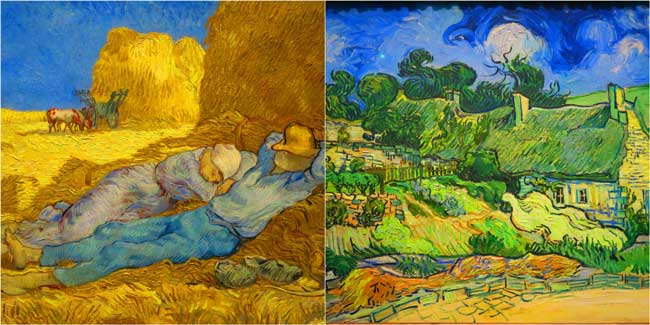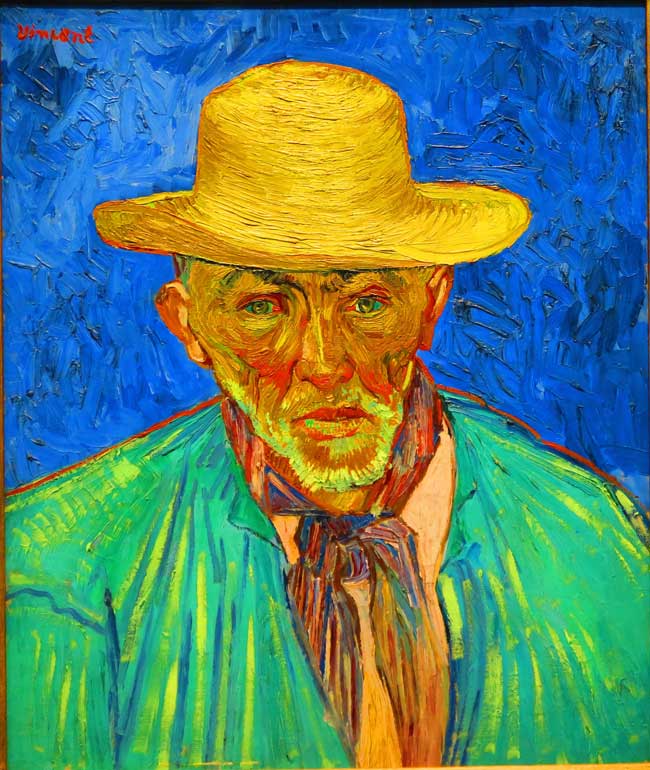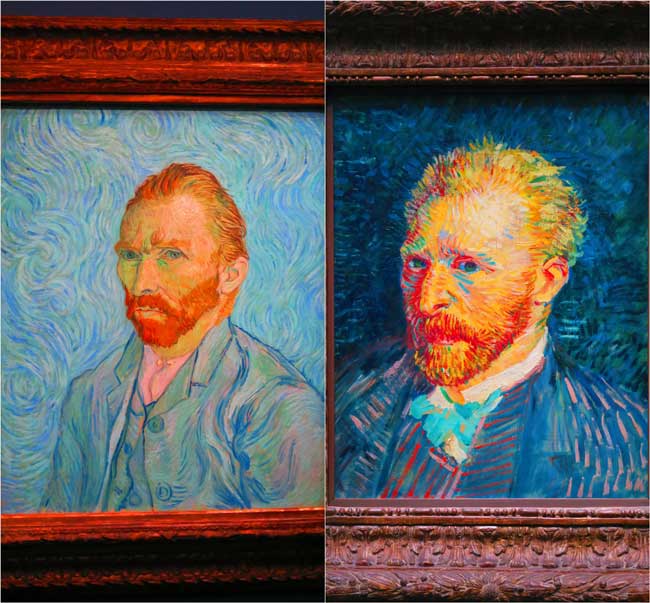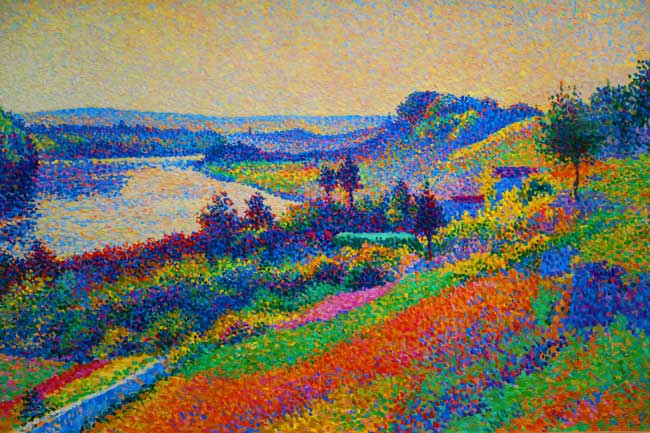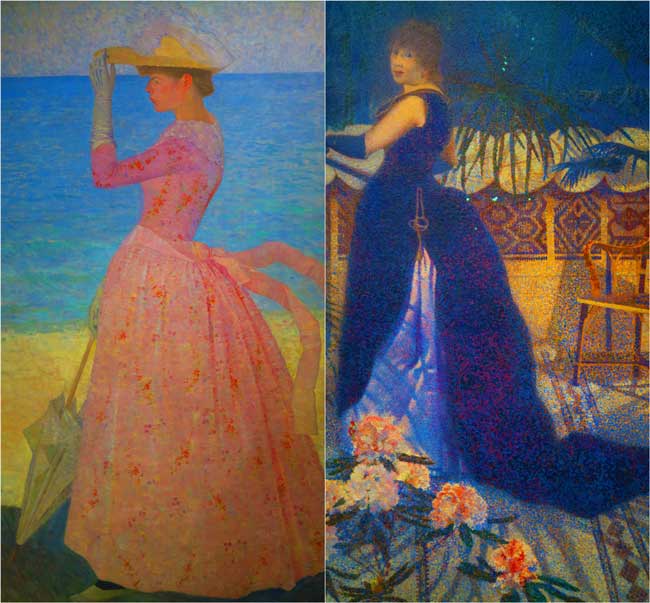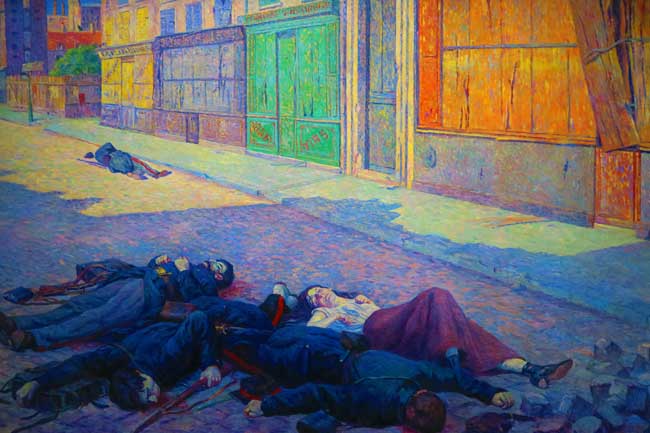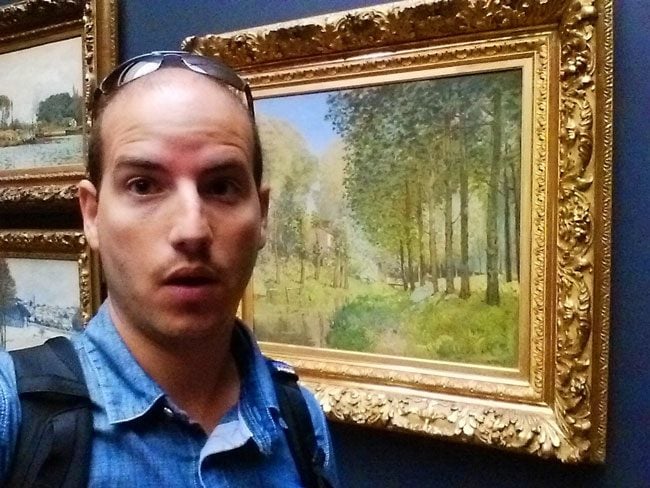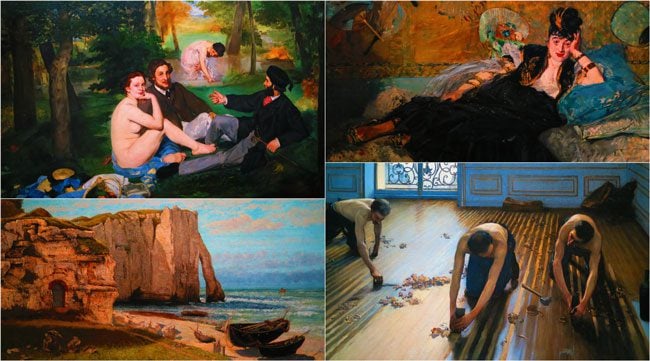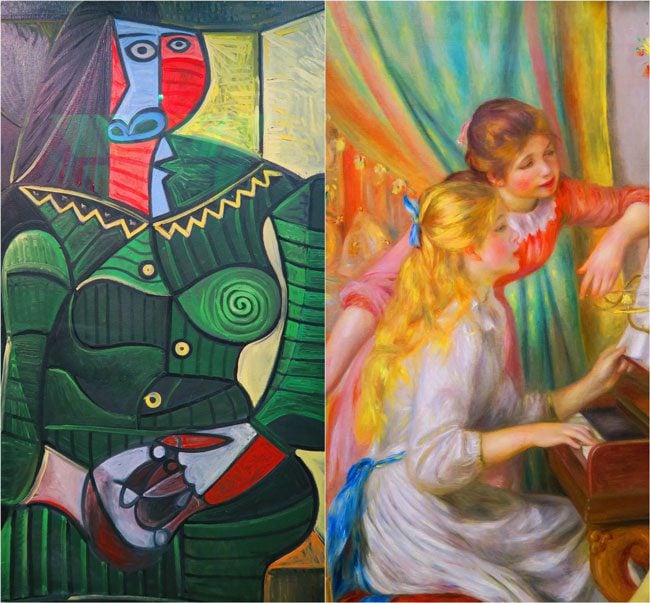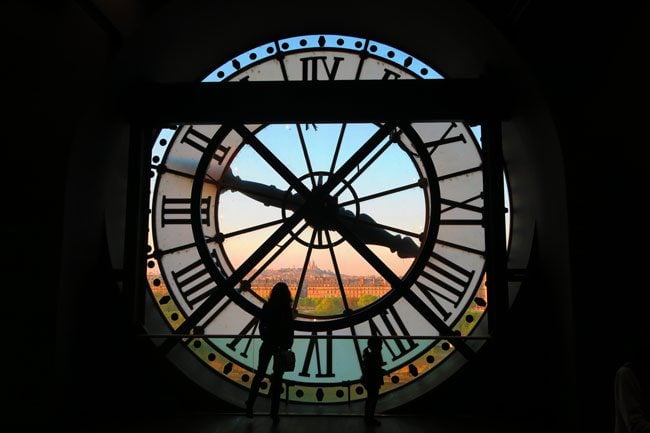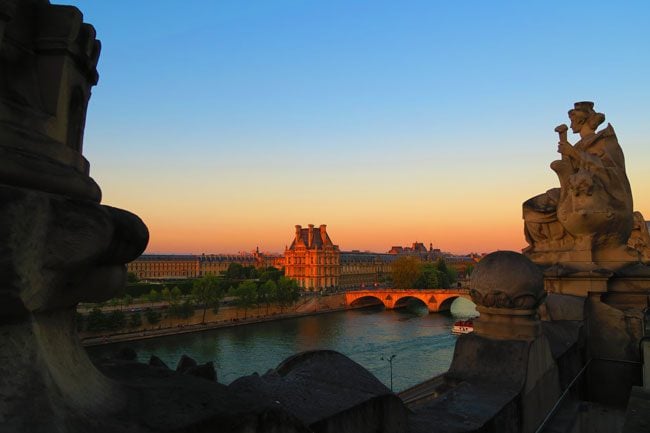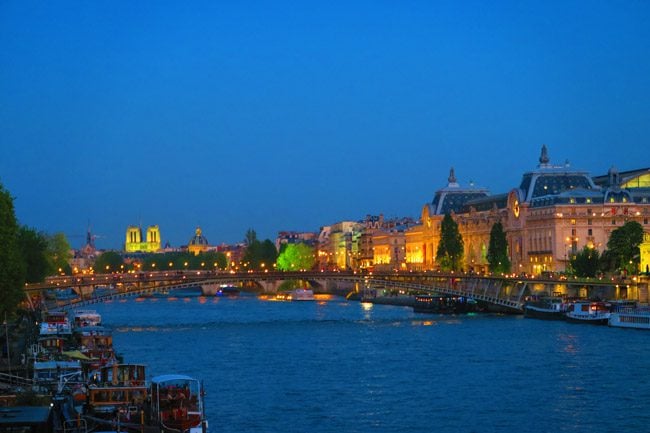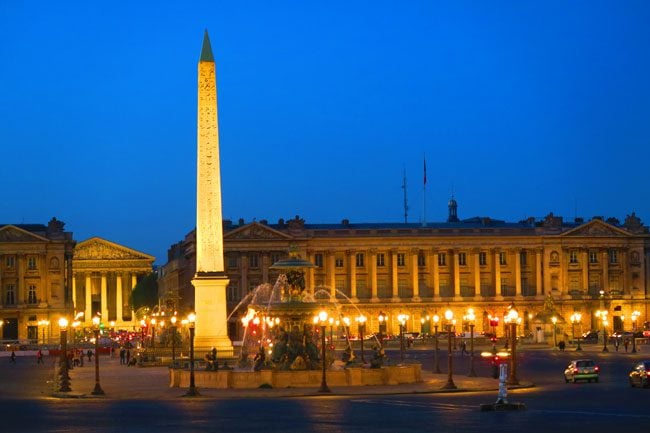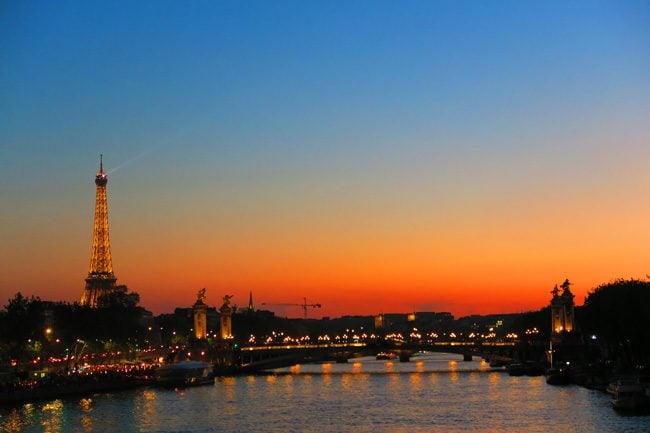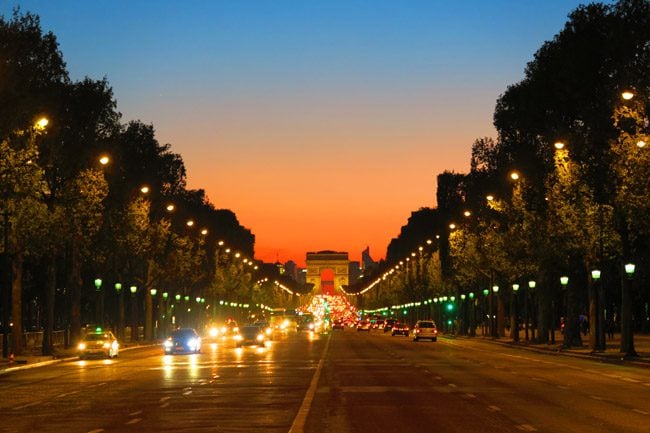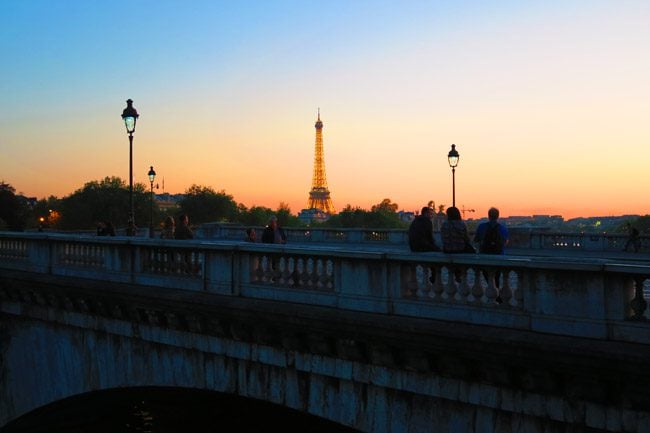A Guide for Visiting The Musée d’Orsay of Paris
Although Paris is essentially one giant museum, it’s home to some of the world’s greatest ‘official’ museums and one such museum is the Musée d’Orsay. If you like art, the Musée d’Orsay is must-see museum in Paris. But even if you are not an art connoisseur, as is the case with me, a visit to the Musée d’Orsay is one of the top things to do in Paris. This guide covers to best visit the Musée d’Orsay and how to make the most of your time.
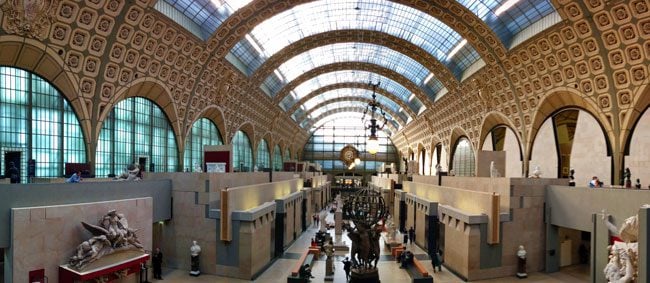
Heading to Paris?
Plan the perfect trip to Paris with free and in-depth Paris travel guides, including the Best of Paris collection and a guide to all major Parisian neighborhoods.
Why Visit the Musée d’Orsay?
Let’s start with the building itself. The Musée d’Orsay is housed in a former railway station but let me tell you this: my hometown did not have train stations like this. After years of decay and abandonment, and just when it was about to be demolished, public opinion turned the tide, and the building was beautifully restored to the museum of today.
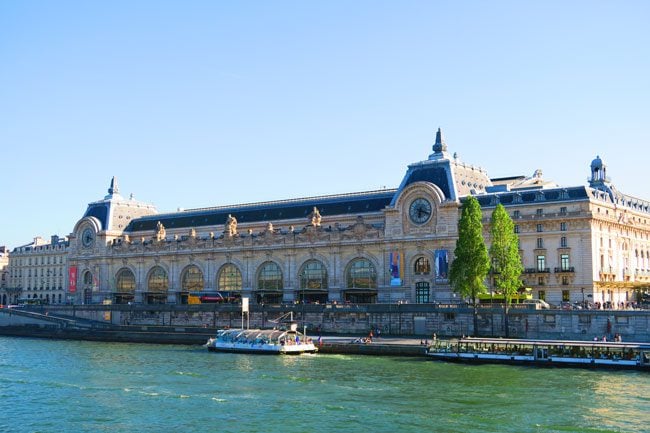
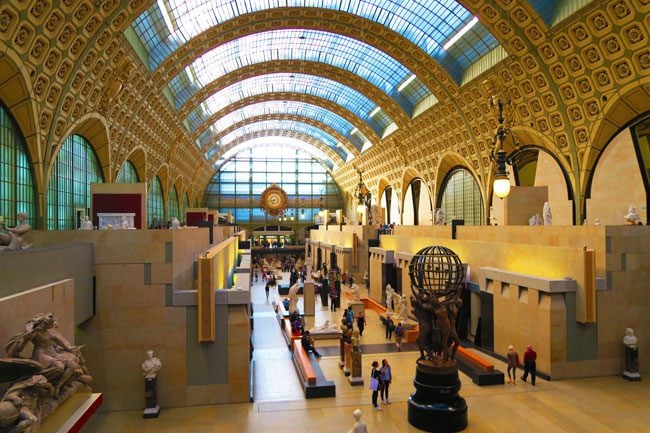
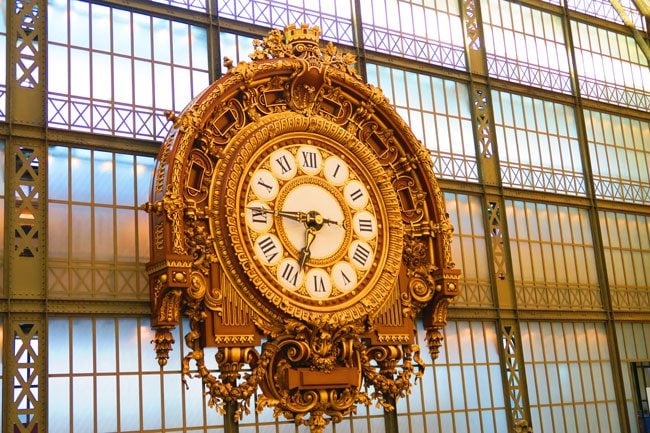
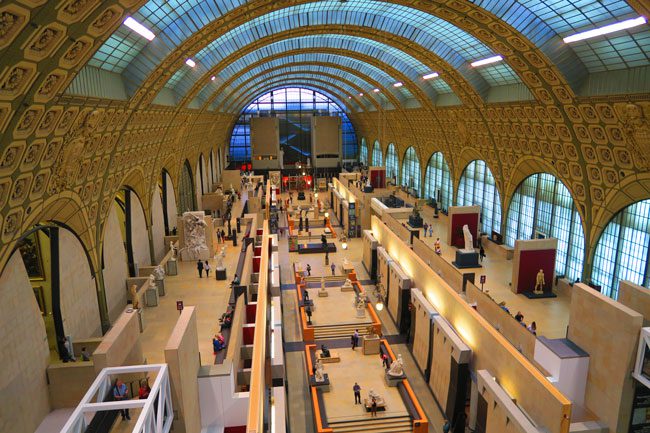
Now let’s proceed to the real reason why we’re here, the art. The Musée d’Orsay picks things up where the Louvre leaves things off, and that’s the post Classic era of the second half of the 19th century. The Musée d’Orsay is famous for its prized treasures from the Impressionist and Post-Impressionist eras, a time of revolutionary experimentation and famous names such as Van Gogh, Renoir, Monet, Picasso, and more. We’ll get to that in a minute!
When is the Best Time to Visit Musée d’Orsay?
The museum is open every day except Monday (as most museums and markets in Paris are) from 9:30 am to 6 pm. On Thursdays, the museum is open until 9:45 pm, and that’s the best time to visit as visitor numbers are much lower, and you’ll have a more pleasant time exploring the masterpieces. You might also be in for another treat if you visit on Thursday evening, but you’ll have to read the rest of the post to find out what that is.
Full-price tickets are ~€17 but there are various concessions made, so check if you’re eligible for a discounted entrance at the Musée d’Orsay. As with many museums in Paris, the Musée d’Orsay is free to the public on the first Sunday of the month, but as you can imagine, it’s probably when it’s most crowded. You can buy your tickets at the museum itself, but to skip the lines, it is recommended to book an online ticket for the Musée d’Orsay.
How to Get to the Musée d’Orsay?
Paris is one of the most beautiful cities in the world and there’s no better way of seeing it than on foot. Walking is a good option if it’s a nice day outside and you have the time. The Musée d’Orsay is in the 7th arrondissement (district) and sits on the River Seine. If you’re coming from the north bank, a nice walk can include crossing the beautiful Tuileries Gardens and hopping over one of the bridges to cross the Seine.
If you want to arrive by Metro, the closest stop is Solférino or the RER’s Musée d’Orsay stop.
How Long Do You Need at Musée d’Orsay?
I visited the museum after work on a Thursday evening and got there at around 6:30 pm. I left at around 9 pm, having briefly seen all the major wings. However, I will definitely be back here as, on my first visit, I simply scouted which sections of the museum I enjoy the most. If you are not an art expert or art lover like me, to fully enjoy the museum, you still need a good 4-5 hours. The works here are super impressive, and to properly see the Musée d’Orsay, several short visits are likely required.
What to See at the Musée d’Orsay?
Wow, where to begin? There’s so much to see! The museum is made up of 3 main levels (confusingly numbered 0,2 & 5), along with a few smaller display rooms. It’s all arranged in chronological order so if you want to see it all, it makes the most sense to begin at the ground level. If you already know which period or which artwork you want to focus on, just head there straight (hint: top-level).
The Ground Floor
The ground floor of the Musée d’Orsay has two main parts: the central alley of the sculptures and the exterior facing rooms that house the paintings. The sculptures form two rows, reminiscent of railway tracks, and are some of the finest from the mid-19th century.
The paintings on the ground floor are from the pre-Impressionist era, and you’ll find here works by Delacroix, Benouville, and Pissarro but also some works by Monet and even Picasso. You’ll find here mostly religion-based art, the kind you’ll find in the Louvre, but here it’s from the latter period of the Classic era.
Not to be missed are Gustave Courbet’s huge works of art and one famous painting that really started to shake the establishment – The Origin of the World, painted in 1866. Can you imagine the controversy this painting must have stirred up? If you’re under 18, skip this one.
There are also smaller rooms with exquisite furniture, and at the far end of the hall, an interesting 3D replica of Central Paris, complete with Opera Garnier right beneath your feet as well as a super-detailed scaled version right next to you. The amount of detail that went into this model makes you wonder how they built the real thing.
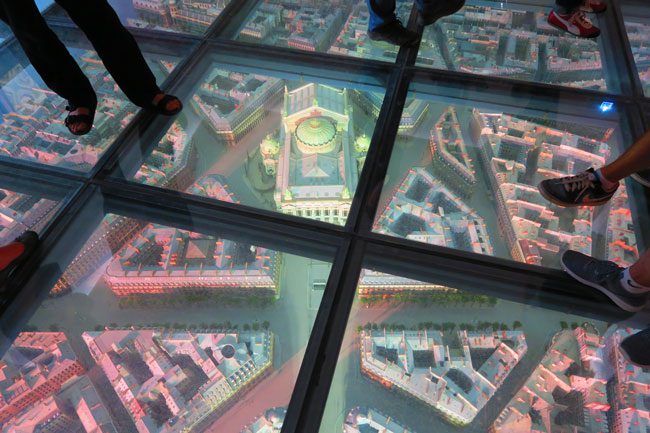
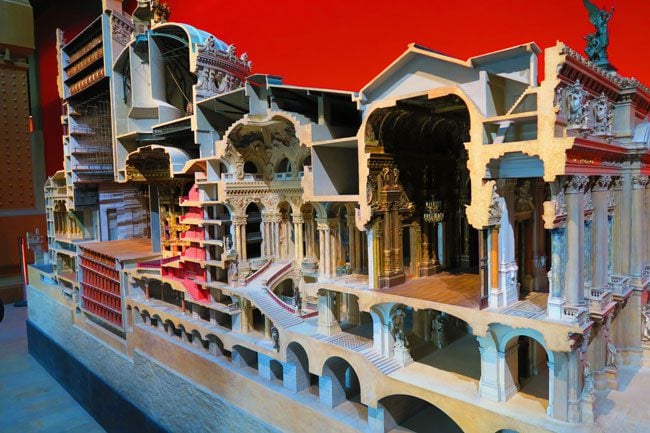
The Second Floor
Let’s move up to the second floor and the Impressionist paintings. In the late 19th century, a group of artists started to break away from the conventional way of painting and developed a style that would become to be known as Impressionism. This section of the Musée d’Orsay is entirely devoted to their work.
Highlights in this section include the works of Monet, Cezanne, Gauguin, Millet, and of course, Vincent Van Gogh. There’s an enormous collection of their work in the Musée d’Orsay, and this is one of the most popular sections of the museum, as you can imagine.
You’ll also find on this floor Neo-Impressionism works. This movement pioneered the use of advanced colors and used dotted brushstrokes to create their masterpieces.
The Top Floor
I must admit that I skipped the small middle floors that house Art Nouveau from Central and Northern Europe, England, and the US. If you have the time, check those out and let me know by adding a comment in this post.
And now to the definite highlight of the visit to the Musée d’Orsay, where the finest masterpieces of the Impressionist movement are housed.
Monet, Courbet, Manet, Picasso & Renoir comprise most of the real estate here. I didn’t know just how beautiful these paintings were. As I was staring at one of the Monet masterpieces, I realized we have a replica hanging in our living room back home. I felt nostalgic, and I was in awe as I explored the rest of this floor. This is the climax of your visit and a must-see in the Musée d’Orsay. If I had to do it again (and I will), I will simply head straight to the top floor and spend most of my time digesting these masterpieces. You can also head to nearby Giverny on a day trip from Paris and check out Monet’s House & Gardens, which inspired some of the beauties you see on display.
Not to be missed on the top floor is one of the giant clocks that face the exterior. This was a railway station, after all, so you had to let people on the outside know they’re gonna miss the train. Also on this floor is a terrace with fine views of the Seine and the Sacre Coeur over on top of Montmartre.
In Conclusion
Wow, the Musée d’Orsay left me wanting more, a lot more. I am by no means an art fanatic, but the stuff that’s on display here, not to mention the building itself – makes this museum very special. I still find it hard to believe how human beings created these masterpieces, but that’s the big deal with art.
I always thought that if there is one type of art that I do like, it’s Classical art. Those paintings depicting centuries past fascinate me. However, after visiting the Musée d’Orsay, I learned to appreciate the more modern forms of art, most notably the Impressionists. Seeing those works of art up close and personal shed some new light, and though I am still no fan of Contemporary art, I have learned to appreciate the styles that I saw here.
I have visited Paris several times on short visits and never visited the Musée d’Orsay or the Louvre. They were always too big and never on my list of things to do in Paris, especially when the weather is nice. Even if art doesn’t rank high on your list, do visit this museum. Seeing these masterpieces is put it – inspirational. The experience I had seeing those images still comes up in my thoughts, and I’m happy they do. It’s one of the top museums in the whole world and certainly one of the top things to do in Paris.
P.S – if you visit on Thursday evening, I mentioned earlier that there might be another surprise for you. Check out the views on the walk home after a visit to the Musée d’Orsay on a beautifully warm late April evening.
What’s Next?
Plan the perfect trip to Paris with free and in-depth Paris travel guides, including the Best of Paris collection and a guide to all major Parisian neighborhoods.







